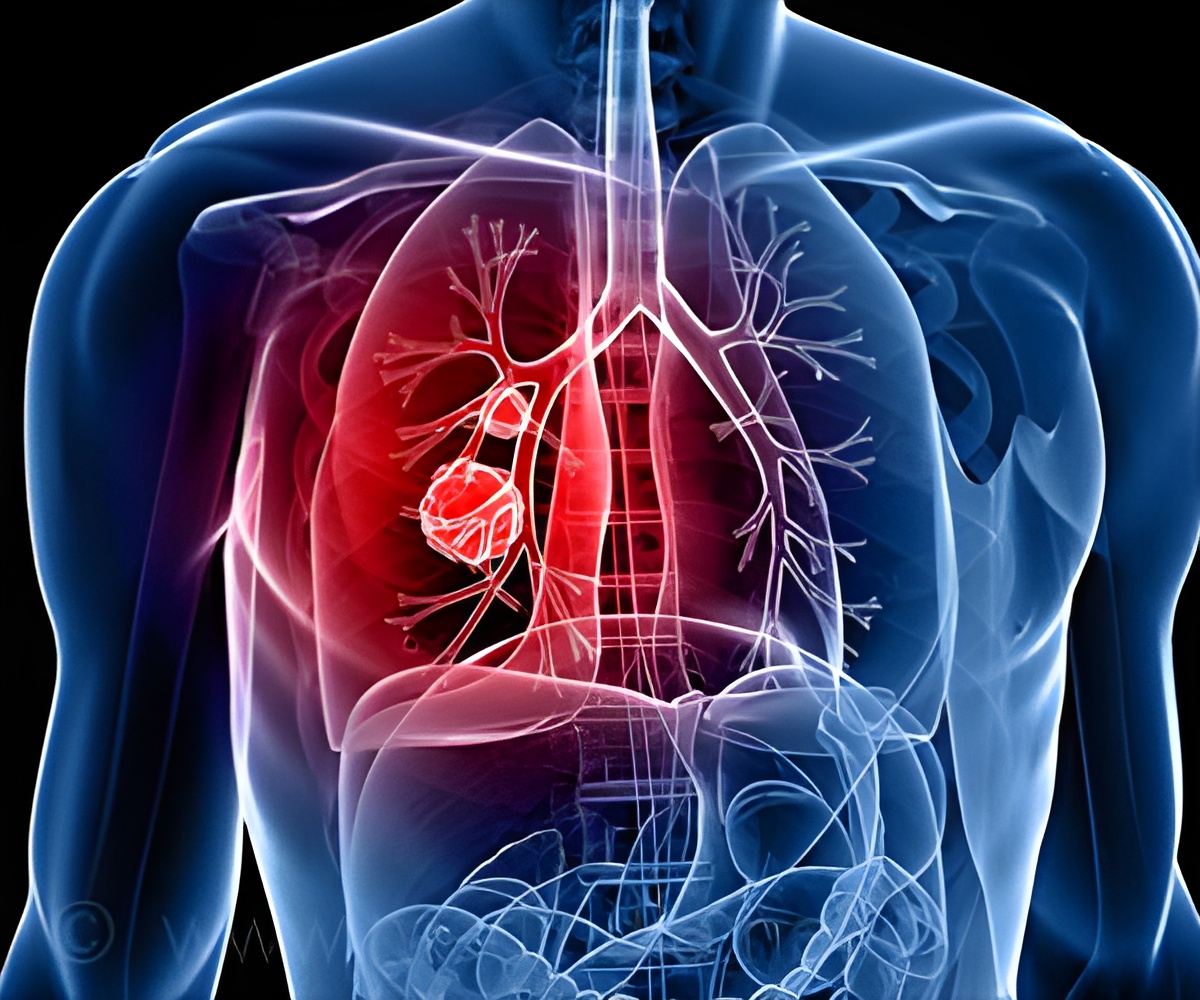Identification of a combination therapy or epigenetic therapy drugs, when used together in lung cancer patients can improve their anti-tumor responses.

‘New drug combination therapy developed for non-small cell lung caner attracts the immune cells to fight against tumors by blocking the cancer gene MYC.’





During the study, published in the journal Cell, a team of researchers led by graduate student Michael Topper; research associate Michelle Vaz, Ph.D.; and senior author Stephen B. Baylin, M.D., combined a demethylating drug called 5-azacytidine that chemically reignites some cancer suppressor genes' ability to operate, with one of three histone deacetylase inhibitor drugs (HDACis). The HDACis work against proteins called histone deacetylases that are involved in processes, such as cell copying and division, and can contribute to cancer development.
The combination therapy triggered a chemical cascade that increased the attraction of immune cells to fight tumors and diminished the work of the cancer gene MYC. Based on these findings, investigators have launched a clinical trial of the combination therapy in patients with advanced, non-small cell lung cancer.
The development of therapeutic approaches for patients with lung cancer has been a critical medical need, says Baylin, the Virginia and Daniel K. Ludwig Professor of Cancer Research at the Kimmel Cancer Center. While immune checkpoint therapy has been "a tremendous step forward, less than half of patients with lung cancer have benefited to date," he says.
"In our study, the two-drug epigenetic therapy combination worked exceedingly well, even before putting in the immune checkpoint inhibitors," Baylin says.
Advertisement
In a series of experiments, researchers studied the combination of 5-azacytidine with the HDACis entinostat, mocetinostat or givinostat in human cancer cell lines and in mouse models of non-small cell lung cancers.
Advertisement
Adding the HDACis further depleted MYC, and together the drugs subsequently caused actions that prevented cancer cell proliferation, simultaneously attracted more immune system T cells to the area of the tumor and activated these cells for tumor recognition.
In mouse models, the strongest response was observed when using 5-azacytidine plus givinostat. In one mouse model with a mutant form of non-small cell lung cancer, this drug combination given for three months yielded prevention of benign, precursor tumors from becoming cancers and caused 60 percent reduction of overall area of benign tumor appearance in the lungs.
By contrast, a group of mice with the same form of lung cancer that were given a mock treatment universally developed large, cancerous lesions in the lungs.
In a second model of mice with established, aggressive, non-small cell lung cancer, treatment with an alternating schedule of 5-azacytidine with givinostat and of 5-azacytidine with mocetinostat not only reduced the growth of established, rapidly growing primary tumors but also dramatically reduced metastatic occurrence.
Source-Eurekalert














